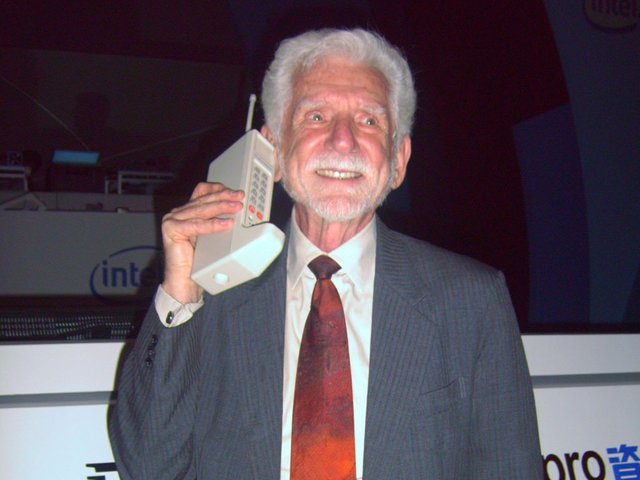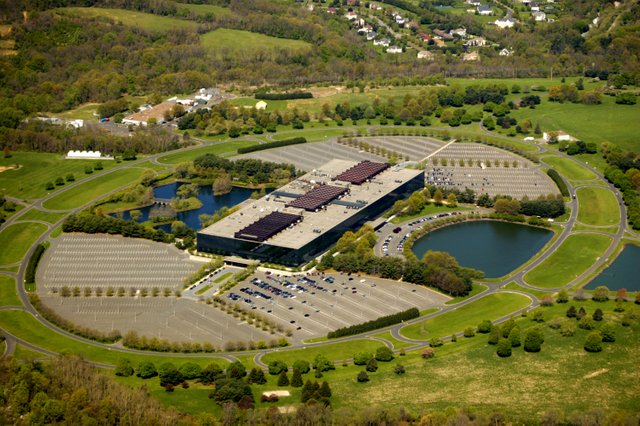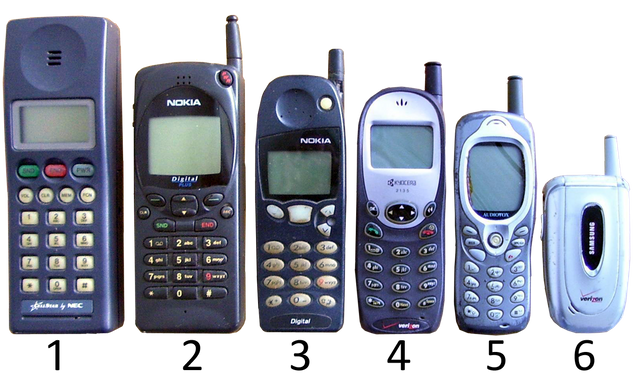The World's First Mobile Phone Call

Martin Cooper reenacting his famous 1973 cell phone call in 2007.
On April 3, 1973, Martin Cooper, an employee for Motorola stood nonchalantly in midtown Manhattan and placed a phone call to Bell Labs in New Jersey. While this sounds unremarkable, Cooper was not using a pay phone. Martin Cooper was placing the world's first mobile phone call. Armed with a prototype that would later become the Motorola DynaTAC 8000x, Cooper dialed Bell Labs and simply stated, "I'm ringing you just to see if my call sounds good at your end." The rest is history.
Who did Martin Cooper call to speak with at Bell Labs?
Martin Cooper famously rang Dr. Joel S. Engel, a researcher and engineer at Bell Labs. Engel is credited with leading the charge on the mobile phone research group at Bell Labs, specifically working on the prototype that Cooper utilized in 1973 to make the world's first mobile phone call. Prior to this, Engel and his engineering team made cell phones possible by developing the architecture and infrastructure necessary for a cellular network to function, providing a basis for the Advanced Mobile Phone System. Before working with Bell Labs, Engel worked at Bellcomm on guidance systems for the Apollo Space Program. He also frequently lectured at the famous Polytechnic Institute of Brooklyn.

The Bell Labs headquarters in Holmdel, NJ. Bell Labs is responsible for the first cell phone prototype.
How big was the prototype cellphone Cooper utilized?
Cooper made his famous phone call on a prototype phone that would eventually become the Motorola DynaTAC 8000x. The phone weighed 2.4 pounds and measured a whopping 9.05 inches long, 5.11 inches deep, and 1.75 inches wide. The prototype only allowed for 30 minutes of total talk time and took a lengthy 10 hours to fully re-charge. In the present day, the average cell phone is only around 6 inches long and is very thin at around .28 inches. You can also fully recharge a present day cell phone from drained to full in about 1.75 hours or less, depending on the brand of phone and the type of charger. The cell phone has certainly come a long way since Martin Cooper's famous 1973 phone call to Bell Labs.
When was the first cell phone made available to the public?
The first cellular phone launched on March 6, 1983. The Motorola DynaTAC was the first phone that was widely available to the public, launching on the first 1G network that was controlled by Ameritech. The phone cost over $100 million to develop and cost the public $4,000 to buy. DynaTAC was developed and researched for over a decade and was not released until 10 years after the first phone call was made on its prototype. Unlike modern phones, the DynaTAC boasted just thirty-five minutes of talk time (five minutes more than its prototype version) and took ten to eleven hours to charge. Despite the clumsiness of the phone's design, sub par battery life, and short talk time, the phone was considered a commercial success. Consumer demand was strong and has remained strong ever since.

Cell phones were primarily used in sales and business. It wasn't until decades later that they became widely used by the general public.
Who was the primary consumer for the first cell phone?
The primary consumer for the DynaTAC 8000x was businessmen and other professionals. Cell phones were not widely used for personal use when the phone first arrived in 1983, as it carried a hefty $4,000.00 price tag and was seen as unattainable by the average person. The phone was also quite clumsy and had to be carried in a briefcase or bag. Subsequent models were quite smaller and more mobile than the DynaTAC. For instance the Nokia Mobira Talkman and the Motorola 2900 Bag phone were big hits and reached a wider audience due to their smaller frame, longer battery life, and greater talk time. As technology advanced, cell phone companies discovered ways in which to pack more features into a smaller frame, at a more reasonable price tag. Thus allowing for cell phones to be as popular in everyday life as they currently are.
Nice @flow
Shot you an Upvote :)
Hi! This post has a Flesch-Kincaid grade level of 8.4 and reading ease of 69%. This puts the writing level on par with Leo Tolstoy and David Foster Wallace.
Nice @flow
Shot you an Upvote :)